Epsom salt, known scientifically as magnesium sulfate, is an invaluable asset for gardeners who aim to achieve optimum growth and yield with their tomato plants. This compound provides essential nutrients that include magnesium and sulfur necessary for various physiological processes in a plant. Application of Epsom salt helps solve common problems like lack of magnesium which is often observed through yellow leaves and poor flowering leading to healthier tomatoes in the long run. This comprehensive guide will look at how you can apply Epsom salt most effectively to get the best possible results out of your tomato plants. Whether you are an experienced horticulturist or just beginning, knowing about Epsom Salt’s role can significantly improve your gardening practices.
What Are the Benefits of Using epsom salt for Tomato Plants?
The primary advantage of Epsom salt for tomato plants is correcting a magnesium deficiency. Magnesium forms part of chlorophyll, the pigment that enables photosynthesis and converts light into plant food. Moreover, sufficient magnesium levels result in healthy and green leaves as well as increased photosynthetic efficiency which goes along way into improving plant vigour and productivity. In addition to this, sulfur from Epsom salt aids in enzyme action and protein formation thereby promoting sturdy plants. On the other hand, continuous application of Epsom salt can boost the intake of other necessary nutrients like nitrogen and phosphorus to facilitate stronger root growth and more abundant fruiting.
Why Do Tomatoes Need Magnesium and Sulfur?
Magnesium and sulfur are crucial nutrients for proper development of tomatoes. Magnesium is an essential component in chlorophyll molecule which helps in photosynthesis by converting carbon dioxide to food using sunlight energy causing deficiencies lead to pale leaves because it’s integral in formation of chlorophyll or other pigments; thus its shortage may cause yellowing leaves with green veins. In technical terms, adequate amounts should be within 3000-5000 ppm.
On the contrary, sulfur is required for synthesis of important amino acids as well as proteins used in growing plant tissues including enzymes that catalyze most biological reactions. The presence of sulphur also ensures effective functioning nitrate enzymes within the organism. Normally sulphur content on tomato leaf tissue ranges from 2000-3000 ppm. Satisfactory concentrations therefore enable better rates of vegetation growth leading to improved yields with better tasting fruits.
How Can Epsom Salt Enhance Fruit Production?
This section will outline how Epsom salts promote tomato fruit production through their provision of magnesium and sulphur which play significant roles in various physiological processes such as those mentioned above.Towards this end there exists a direct impact on energy generation by plants when chlorophyll is being produced. Leaf tissue containing magnesium should contain between 3000 and 5000 ppm of Mg, ensuring a plant’s normal growth and photosynthetic activity.
Sulphur is another essential constituent for synthesis of some amino acids or proteins that develop the structural components and enzymes within the plants. The best concentration is approximately 2000 to 3000 parts per million (ppm) in leaf tissue used as indicators for lessening enzyme effectiveness when metabolizing N and this overall plant’s health status. Thus, even when it comes to physiological conditions such as blossom end rot, Epsom salt application can be instrumental in ensuring that plants become more vigorous towards production of fruits.
Does Epsom Salt Prevent Blossom End Rot?
Blossom end rot is usually caused by calcium deficiency with consequent disintegration of cell walls in fruits leading to dark sunken areas at one end. Magnesium sulfate or Epsom salts do not contain calcium hence cannot be used effectively in controlling blossom end rot. For instance, technical considerations regarding tomato plants include maintaining calcium levels within tissues at around 1500-2500 ppm to maintain their structural integrity avoiding dry ends of a fruit. However, addressing calc deficiency through appropriate measures such as using calcium-rich fertilizers or keeping soil moisture steady enough will help prevent the situation from happening again in future.
When Should You Add Epsom Salt to Tomato Plants?
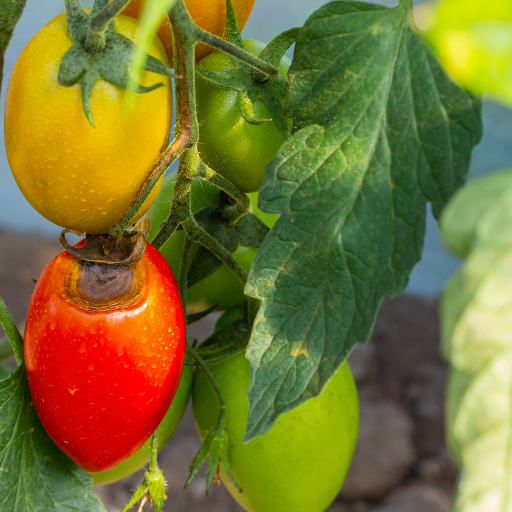
Epsom salt can be put on tomato plants at some stages in their growth. At first, adding Epsom salt to the soil during planting would be great. Similar to the above approach, a tablespoon of Epsom salt may be mixed with the soil in each planting hole while putting young plants in it. Additionally, extra doses might prove helpful over various parts of growing time. This implies that during flowering and fruiting periods, a foliar spray made by dissolving two tablespoons of Epsom Salt in one gallon of water can help to enhance fruit set and development.
Is It Better to Add Epsom Salt During Planting Time?
Planting time is a good occasion for incorporating some Epsom salt into tomato plants but not the only one. Including Epsom salts while planting supports early root formation together with instant magnesium source. University of Delaware Cooperative Extension has suggested this input as mixing 1 tablespoonful of Epsom Salts into the hole before planting seeds or seedlings (The Old Farmer’s Almanac; Gardening Know How).
Supplementing tomatoes with magnesium through Epsom salt can also benefit growers, even if they opt for alternative methods like fertilizers or compost manure application or grow in different regions.
Should You Apply Epsom Salt During The Growing Season?
Yes, you should apply it during this time as well, according to this gardening blog post on applying epsomsalt for tomatoes and peppers, which gives more insight into applying it to tomato plant leaves. Below is an article from another website outlining how to water effectively by using epsomsalt blended with water, which could serve as an answer.
Secondly, “The Old Farmer’s Almanac” also highlights how farmers can use epsomsalt to prevent blossom end rotting since rich minerals are present in this type of soil amendment.
Moreover, Bonnie Plants says that yellowing leaves may be remedied by ensuring steady supplies of Epsom salt and there are many applications for it such as a tablespoon of Epsom salt mixed with one gallon of water. Simply apply this mixture directly to the soil around plants every two weeks.
These recommendations are in line with best practices for horticulture and support tomato productivity throughout the entire growing season by providing optimal magnesium levels.
What About Adding Epsom Salt at The Flowering Stage?
By adding so, you will have ensured consistent supply of magnesium to your tomatoes, enhancing their strong growth rate and fruit development. During this stage, chlorophyll production is sustained through application of epsomsalt which helps the plant to photosynthesize well while transferring energy inside its system according to University Of Delaware cooperative extension.
Practical Farmers of Iowa recommends using one gallon of water infused with a table spoon of Epsom salt and apply it to the soil in which tomato plants grow every 2 weeks. This is done in order to monitor the magnesium levels, which need to remain high enough to prevent nutrient deficiencies.
According to Texas A&M AgriLife Extension, applying Epsom salt as a foliar spray (2 tablespoons dissolved in a gallon of water) during the flowering stage can help overcome possible magnesium deficiency by letting the plant absorb this nutrition more efficiently through the leaves. This increases fruit setting capacities and overall plant vigor.
These strategies are based on evidence-based horticultural suggestions that underscore the consistent supply of magnesium throughout flowering for optimum tomato health and productivity.
How to Apply Epsom Salt to Tomato Plants?
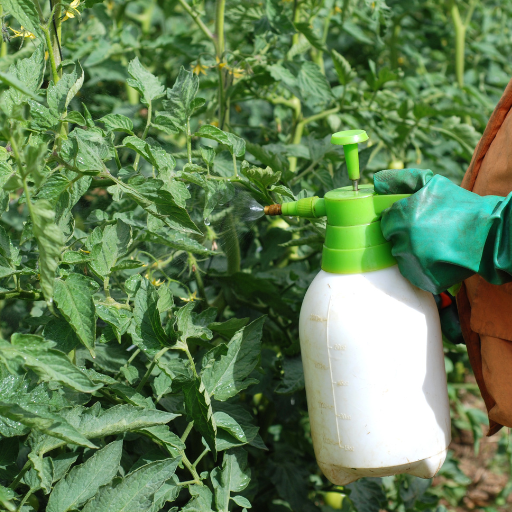
To apply Epsom salt to tomato plants, you need to make a solution of Epsom salt and water. Dissolve 1 tablespoon of Epsom salt in one gallon of water for soil application and pour that mixture around the base of your tomato plants once every two weeks. This will ensure continued magnesium supply necessary for plant health. On the other hand, dissolve two tablespoons of Epsom Salt per gallon of water for foliar application and spray over the leaves. This enables quick absorption through the leaf and is very useful where symptoms are evident indicating shortness of magnesium. Nevertheless, there should be caution against excessive applications as too much magnesium can interfere with soil nutrient equilibrium state. Always monitor regularly while at the same time practicing balanced fertilization for optimum plant growth and fruit development.
How Much Epsom Salt Should You Use?
In order to determine how much to use on tomatoes, it is recommended that 1 table spoonful should be spread per foot high of a growing tomato plant after every two weeks. The foliar spray uses a combination of 2 tablespoons per gallon (that’s about 7-8 liters) as its measurements which should not be exceeded or exceeded in quantities; this may unbalance soils’ nutrients leading to intoxication or poisoning uprooting them from the farm land if they are grown in large scale. Continuously watching plants and observing whether they lack magnesium is vital in maintaining good growth rate.
What’s the Best Method: In the Hole or as a Foliar Spray?
When comparing applying Epsom salts into holes during planting vis-à-vis spraying them onto leaves, both methods have advantages depending on crop requirements.
- The In The Hole Method: This involves putting Epsom salt right into the hole when transplanting takes place. The usual practice involves thorough mixing into some soil by taking one table spoonful completely at the bottom hole where it is planted which assist in maintaining magnesium supply to the root zone while the plant is establishing itself. Particularly, this method helps to combat early growth magnesium deficiency and leading to good root development as well as an overall healthy plant.
- Using Foliar Spray: A foliar spray enables the faster magnesium intake through the plant’s leaves. For application on foliage mix 2 tablespoons of Epsom salt with one gallon of water and then spray this mixture directly on the leaves. This way it is possible to quickly correct visible lack of magnesium, which can be repeated after two weeks. Among others, The type of fertilization that will give you immediate results when there is a need for nutrient correction is foliar spraying because in general terms leaves absorb nutrients more swiftly than roots do.
Can You Combine Epsom Salt with Other Fertilizers?
Combining Epsom salt with other fertilizers can work well as long as it complements tomato plants’ overall nutrient regime.It offers mainly magnesia and sulfur which are usually low in soils but may not be adequately supplied by standard manures alone.Be sure it maintains proper distribution of nutrients when used concurrently with any other fertilizer so that overfeeding may be avoided at all costs.What can I collaborate? In addition, though not always necessary organic or conventional NPK fertilizers where typically should have an agreement on how often they get applied therefore preventing nutritional imbalances since their presence within plants sometimes vary from soil sample.It is about promoting optimal plant health and productiveness by adjusting applications based upon ongoing examination alongside soil testing.
Is Soil Testing Necessary Before Adding Epsom Salt?
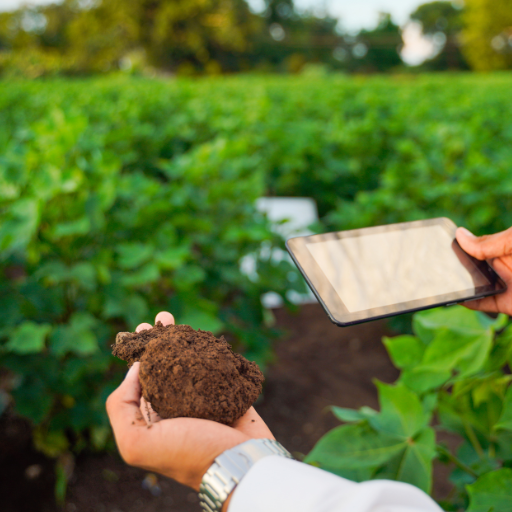
Yes, soil testing is necessary before putting Epsom salt in your garden. The test for the soil will give you vital information about its nutrient levels at present, its pH value and general condition. This data helps to identify any insufficiencies including magnesium and sulfur that Epsom salt addresses. Absence of soil testing may result into too much use leading to an imbalanced nutrition and other negative effects on plants. Soil test gives guidance on best options to optimize nutritional regimen for a healthy plant development.
How Can You Do Soil Testing?
Follow these steps to do a soil test: First, collect samples from several places within the garden so that you have a sample which is representative enough. Using a clean trowel or probe, get soil from the root zone usually about 6-8 inches deep Mix all the samples well in a clean bucket and allow them to dry Next get rid of any debris like rocks or organic material Place some of the dried mixed soils in either a clean plastic bag or even the container of the soil testing kit with which you are using Label it appropriately with details such as sample location as well as date Finally send it off to a reputable laboratory involved in soil testing or use an at-home tester according to instructions provided. The results will tell you what your soils pH level is and also help you adjust properly your gardens fertilizer program.
What if My Soil Lacks Magnesium?
If there is lack of magnesium on your soil due to test results from elemental analysis then there are several things that can be done about this problem; To increase amount of magnesium (Mg) into your soill most experts recommend use of Epsom salt (magnesium sulfate) For instance for garden soils, mix 1-2 tablespoons per gallon water and apply around base of plants every two weeks For larger areas where coverage may be impractical however, broadcasting about 1 pound of Epsom salt per 100 sq. ft and then irrigating may be effective.
Another method is by adding organic matter such as compost or well-rotted farmyard manure which can slowly increase the soil’s magnesium levels over time. For an immediate effect, dolomitic lime especially when your soil is acidic. Dolomitic lime has both magnesium carbonate and calcium carbonate. This is applied at a rate of about 5 pounds per 100 square feet.
Magnesium levels should be tested again to ensure they fall within the optimum range, which typically ranges from 25 to 50 ppm for healthy plant growth in order to monitor them periodically. Modify your practices of soil amendment depending on subsequent test results and to keep nutrient levels balanced for a vigorous growth of plants.
Signs Your Tomato Plants Need Epsom Salt
If you see any of these symptoms on tomato plants, it could be an indication that they need Epsom salt. One sign is interveinal chlorosis, where yellowing develops between the veins while the veins remain green due to a lack of enough magnesium. Another symptom is stunting. Generally, tomatoes with early-falling flowers would benefit from additional magnesium because it enhances fruit and flower formation in them.
To achieve the best possible results, combine 1 tablespoon of Epsom salts with one gallon of water and spray your garden plants when you first notice symptoms of chlorosis. Alternatively, you may apply Epsom salts directly to the soil at a rate of 1 tablespoon per foot of plant height and mix it in around your plants’ roots to ensure spreading magnesium equally.
The continued monitoring of the plants after the initial application is vital as too much magnesium can cause imbalances with other essential elements such calcium and potassium. Ideally, levels of magnesium in soils should range from 20 to 40 parts per million (ppm) for promoting healthy tomato growth. In case this condition persists, another follow-up soil test should be run so that exact nutrient status can be identified and adjusted accordingly.
Common Problems When Using Epsom Salt on Tomato Plants
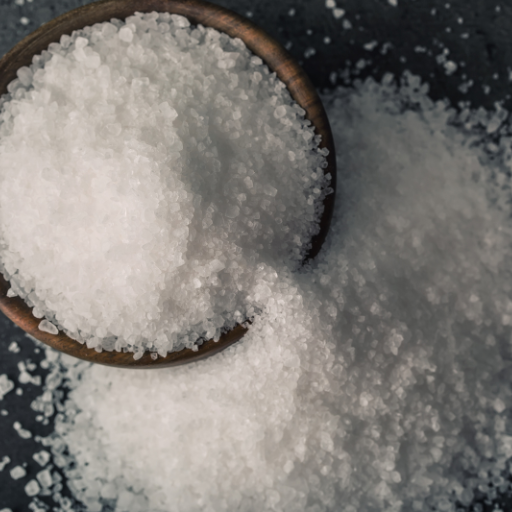
Epsom salt overuse may lead to an excess of magnesium in the soil that could disrupt absorption of other important nutrients like calcium or potassium and may result in plant deficiency conditions, thus affecting their health adversely. Similarly, excessive magnesium can affect the water content in the soil and it will not be able to hold enough water to support growth of tomato plant. Also, putting it incorrectly may cause alteration of soil pH levels thereby complicating further nutrient uptake. To curb these dangers, it is vital to observe prescribed quantities and continuously check on the state of the earth.
What Are Some Signs You May Be Using Too Much Epsom Salt?
- Yellowing and Browning Leaves: If used in excess, Epsom salt can cause leaves to become yellowed, browned, or necrotic, especially along margins, due to an imbalance caused by magnesium toxicity, among other nutrients necessary for healthy foliage, such as calcium and potassium.
- Poor Fruit Quality: High concentrations of magnesium can interfere with calcium movement leading to blossom-end rot. Affected fruit show dark indented spots on the blossom end. Good amounts of calcium are needed for cell structure and membranes.
- Soil Nutrient Imbalances: Overuse might alter soil pH levels and reduce its ability to retain necessary nutrients through cation exchange capacity (CEC). The correct amount of Magnesium oxide in soils should roughly be between 20-40 ppm; high concentration can inhibit potassium uptake resulting in stunted plant growth with low fruit yields.
- Wilting Plants with Slow Growth: Excessive magnesium stresses plants through poor water holding by soils. Wilting tomatoes, little growth on plants or general decline despite adequate hydration is a result from too much Mg2+.
Are There Other Options Instead Of Epsom Salt?
Yes. Several viable alternatives exist over using Epsom salt for fixing these deficiencies or promoting better plant health. Composts as well as manures decayed properly are good examples since they present a wide range of nutrients and are good for soil texture. Additionally, organic fertilizers that provide balanced minerals in the right amounts can release plant nutrition slowly instead of Epsom salt application. Dolomitic lime can also be used just for magnesium deficiency to help with soil pH adjustment. Lastly, seaweed or kelp meal may be substituted instead as these have magnesium and other important micronutrients. Continuous soil analyses should be carried out and a properly balanced fertilizer schedule will prevent the need for extra magnesium supplements thereby leading to healthy soils and good plant performance.
Experienced Gardener’s Tips and Tricks for Using Epsom Salt with Tomato Plants
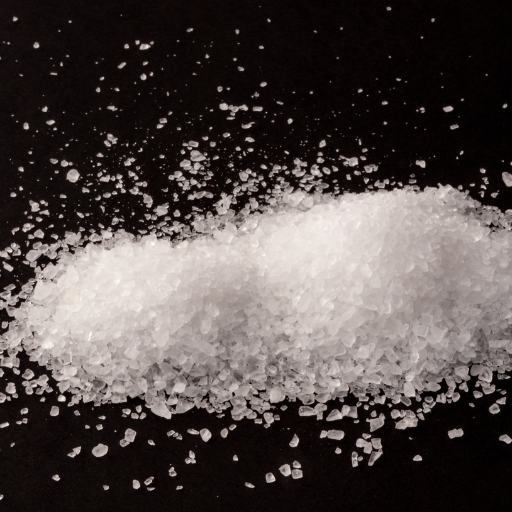
As for the use of Epsom salt with tomato plants, experienced horticulturists propose a few specific steps to optimize yields and minimize detrimental effects. To start with, ensure proper dosage by preparing one tablespoonful of Epsom salt in a gallon of water and using the solution instead of normal watering once per month approximately. This would facilitate measured and controlled magnesium supplementation. Additionally, soil testing should be done before applying it so as to check on magnesium levels in the soil since too much could lead to poor supplementing which brings about nutrient imbalances. Therefore, avoid adding Epsom salt if you already have soils that are high in magnesium; instead think of including other organic matter such as compost to improve general soil fertility. You can also apply this as a foliar spray where 1 tablespoon is dissolved into one gallon of water then sprayed onto foliage early during growing season for an instant pick-me-up. Using epsom salts on your tomatoes can be effective when sprayed directly onto their leaves; this will help give them a quick boost at the beginning of spring.
How to get good fruit production and healthy plant growth
- Watering Schedule: Tomatoes require constant moisture levels for good fruit yield as well as foliage development.Extensive reports indicate that tomatoes require around 1-1.5inches(2.5–3cm)of water every week.The use of drip irrigation system ensures uniform distribution and reduces wastage.
- Proper Pruning Techniques: Through cutting away leaves promotes air circulation inside foliage thus leading to prevention from fungal disease and focusing power on bearing fruit.Break off any side shoots (suckers)to encourage growth through main stems.Researches shows that correct pruning can raise production up to 25%.
- Balanced Fertilization: Use balanced fertilizers containing appreciable amounts nitrogen, phosphorous and potassium.Prior testing helps in determining what nutrients your field lacks.Therefore prolonged release fertilizers make sure that nutrients are available for long-term uptake.
- Mulching: Mulching with organic materials like straw or shredded leaves reduces water loss due to evapotranspiration, maintains a constant temperature and kills weeds in soil.University of Florida study observed 70% reduction in water transpired through mulching.
- Pest and Disease Management: By regularly inspecting pests and diseases, we can apply integrated pest management (IPM) techniques that repel harmful infestations on our plants.Most gardeners use insecticidal soaps, neem oil products, or beneficial insects such as ladybugs to effectively control pests. According to recent sources, these approaches may lead to an over 60% decline in the number of insects destroying crops.
- Crop Rotation: Every year avoid planting tomatoes in the same spot because this may lead to soil-borne diseases and leaching out all the nutrients. By moving them around every three years, some of the worst tomato problems like verticillium wilt and fusarium wilt can be reduced greatly.
- Stake or Cage Support Systems: This support system helps prevent plant sprawling, reduce disease transmission, and promote cleaner fruits.Trellising has been shown to increase tomato fruit yields by up to thirty percent above yields from unsupported plants.
Using Epsom Salt in Vegetable Gardens Besides Tomatoes
Epsom salt, also known as magnesium sulfate, can be used to provide magnesium and sulfur, minerals that are essential for various vegetables apart from tomatoes. Magnesium is integral in chlorophyll manufacturing activity required for photosynthesis whilst sulfur is important in developing vital amino acids. Here is how Epsom salt can be beneficial for various vegetable crops:
- Peppers: Like tomatoes, peppers can gain significantly from the use of Epsom salts. Since it helps in flower formation with bigger and more vibrant blossoms leading to increased yield; ensuring that enough magnesium is present. The recommended rate involves diluting 1tablespoon of Epsom salt with a gallon of water and applying this as a foliar spray once every month.
- Leafy greens (e.g., spinach, kale): These plants need high chlorophyll concentrations, which makes them good candidates for Epsom salt application. Applying soil drench using 1 tablespoon per gallon of water bi-weekly at the base of each plant will ensure adequate levels.
- Beans and Legumes: For beans, strong cellular structure and pod development depend on the availability of magnesium. To prevent such deficiencies an application rate of 1tablespoon full of Epsom salts mixed with one gallon of water applied around plants every month is ideal.
Having the right quantity of Epsom salt and using proper application techniques can enhance plant health and greatly increase harvests among various vegetable crop species. Regular monitoring, along with soil testing, can assist in fine-tuning supplementation strategies for these vital nutrients, which have been supported by extensive agricultural research work.
Mistakes to Avoid When Adding Epsom Salt
Another common mistake is over doing it with epsome salt, which may result in excess levels of magnesium interfering with absorption of other essential elements like calcium. It’s advisable not to exceed guidelines including those that propose use of one tablespoon per gallon of water, as numerous agronomic surveys indicate.
Also, sporadic application is another trap. In order to achieve the best results with Epsom salt, it ought to be uniformly applied with a frequency such as monthly for foliar sprays or every other month for soil drenching. It is suggested that irregular application does not maintain enough magnesium levels thereby undermining the advantages.
Besides, ignoring soil pH may render Epsom salt useless. Neutral soils are preferred for using Epsom salts. Before applying any fertilizer to your soil, you should first test its pH and adjust it accordingly so that plants can effectively absorb magnesium. According to agricultural guidelines, most vegetable crops require a soil pH ranging between 6.0 and 7.0.
Lastly, failing to consider the specific needs of the plant can result in poor yields. Chemical requirements vary depending on the plant species involved, like peppers and tomatoes, which may need monthly foliar applications while beans require soil-drenched solutions every month. Today’s horticultural practices advocate tailoring application methods based on crop type, leading to improved yield and health status at large.
Frequently Asked Questions (FAQs)
Q: How do I use Epsom salt for my tomato plants?
A: You can add Epsom salt to the soil around your tomato plants to provide magnesium, which is a key element in plant growth. Simply mix about 1 tablespoon of Epsom salt with a gallon of water and use it to water the base of the plant.
Q: When should I apply Epsom salt to my tomato plants?
A: You can apply Epsom salt during different stages: at seed starting, when tomatoes in the ground are flowering, and periodically throughout the growing season. Regular applications help in magnesium absorption and nutrient uptake.
Q: Should I add Epsom salts in the hole when planting tomatoes?
A: Yes, adding Epsom salts in the hole when planting can be beneficial. Mix about a tablespoon of Epsom salt into the hole when planting to ensure the plant gets a quick start with essential nutrients.
Q: Can too much Epsom salt harm my tomato plants?
A: Yes, applying too much magnesium can lead to an excess that may interfere with the absorption of other micronutrients. It can also lead to nutrient imbalances and should be used in moderation.
Q: Why is magnesium critical for seed germination?
A: Magnesium is critical for seed germination because it plays a vital role in the formation of chlorophyll, which is necessary for photosynthesis. It also contributes to the development of strong cell walls and overall plant structure.
Q: Can Epsom salt help with blossom end rot?
A: While Epsom salt can assist with magnesium levels, blossom end rot is caused by a calcium deficiency rather than magnesium. Therefore, using a calcium-rich fertilizer is a better solution for preventing this issue.
Q: How do I know if my tomato plants are deficient in magnesium?
A: Symptoms of magnesium deficiency in tomato plants include yellowing leaves with green veins and poor fruit development. If you observe these signs, it may be beneficial to add Epsom salt to the soil.
Q: Can I use Epsom salt as a fertilizer for other garden plants?
A: Yes, Epsom salt can be used as a supplement for other garden plants that are deficient in magnesium, but it should not replace a balanced fertilizer. It’s also good to consult with a soil test before applying it broadly.
Q: How often should I water plants with Epsom salt solution?
A: You should water your plants with an Epsom salt solution about once a month. This frequency helps ensure that the soil retains adequate magnesium without causing excess nutrient buildup.






